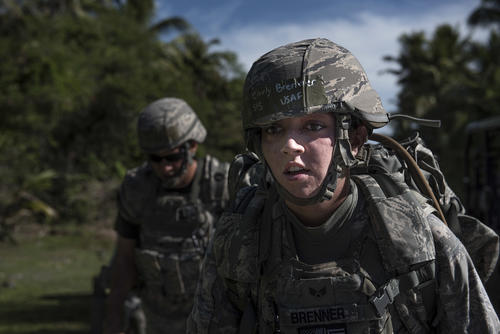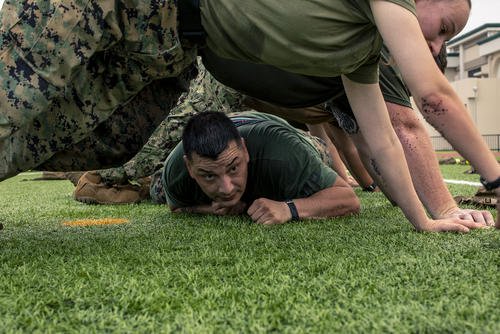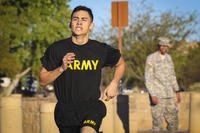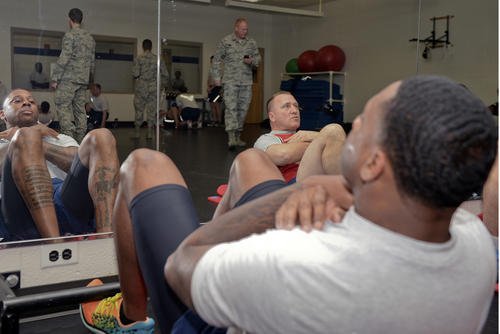Farmer’s walks improve your overall strength and grip strength, as well as your balance and core muscles. This full-body exercise, which is used in strength training and tested in military tactical fitness tests, involves walking while carrying a dumbbell or kettlebell in one or both hands.
Farmer’s walks, which enhance athletic performance and longevity, emphasize the activation of different muscle groups and offer differing degrees of benefits.
Here is what you should know about the two types of farmer’s walks:
Farmer’s Walk with Weights in Both Hands
These primary muscles are worked when carrying weight in your hands by your side:
- Forearms (grip strength)
- Upper back (trapezius, rhomboids)
- Shoulders (deltoids)
- Legs (quadriceps, hamstrings, glutes, calves)
Your core is key in the movement. The entire core system -- consisting of your abdominals, obliques, lower back, hips and shoulder girdle -- is engaged to stabilize the spine and maintain posture. The load is balanced on both sides, so the demand on the lateral core muscles is moderate.
Read Next: What You Should Know About Carb Loading for Military Fitness Tests and Training
However, you can add more weight in both hands, so the strength gains in all the aforementioned muscles are greater. The core muscles involved in maintaining good posture (erector spinae and scapular stabilizers) are engaged equally and work together to keep the body upright and the shoulders back.
Carrying heavy weights in both hands allows you to use a greater total weight, which can lead to improved grip strength, upper back and shoulder endurance and lower body strength. It also has a strong conditioning effect, making it a staple in strongman training and general strength programs.
If you are looking for strength training exercises to improve grip, leg and core strength, go with the heavier farmer’s walk carry with both hands. One of our favorite farmer's walk workouts is to do four sets of 400-meter carries. The rule is that if you drop the weights to rest, you must run a 400-meter lap as your “grip rest period,” then pick up where you left off.
Farmer’s Walk with Weight in One Hand
The primary muscles worked are the same as above, but there is an increased demand for the muscles that resist bending to the side of the weight. This hyperactivates the core compared to the farmer’s walk with two weights.
These muscles are engaged with single-carry farmer’s walks, also known as a suitcase carry:
- The obliques
- Lower back (quadratus lumborum)
- Other lateral core muscles, such as those responsible for preventing rotation
If you are looking for core exercises, add the single-carry farmer’s walk to your routine. One of our favorite exercise combinations is the following circuit that targets grip and core strength. Repeat four times:
- Hanging knee-ups 20
- Farmer’s walks 100 meters (single arm)
- Plank pose for 1 minute
That circuit includes a solid mix of testing elements, along with various core strengthening activities. Switch sides as your grip fails or alternate every 100 meters with left- and right-hand carries (two each).
Both variations of the farmer's walk are excellent exercises. If your primary goal is to strengthen your core, especially the obliques and lateral stabilizers, the suitcase carry (one hand) is superior. If your goal is to maximize overall strength, conditioning and grip strength, the bilateral farmer's walk (both hands) is more effective.
Incorporating both into your training program can provide a well-rounded approach to strength and stability.
Want to Learn More About Military Life?
Whether you're thinking of joining the military, looking for fitness and basic training tips, or keeping up with military life and benefits, Military.com has you covered. Subscribe to Military.com to have military news, updates and resources delivered directly to your inbox.



















